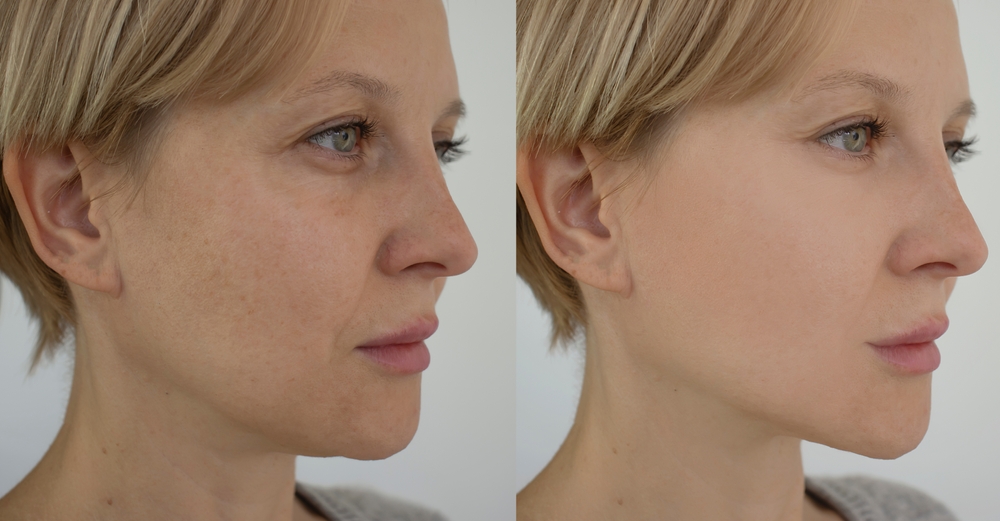WHAT IS A FACELIFT SURGERY?
Facelift surgery, also known as rhytidectomy, is a cosmetic procedure aimed at reducing the signs of aging in the face and neck. It is a surgical technique that involves lifting and tightening the facial and neck tissues to restore a more youthful appearance.
During a facelift procedure, the surgeon makes
incisions typically around the hairline, temples, and behind the ears, which allows them
to access the underlying tissues. The surgeon then lifts and repositions the muscles and
connective tissues, removes excess skin, and redistributes fat if necessary. The skin is
then redraped over the newly tightened structures, and the incisions are closed with
sutures.
Facelift surgery can address various concerns, including sagging skin, deep creases,
jowls, and loss of muscle tone in the face and neck. It can help improve the overall
contour and definition of the jawline, reduce the appearance of wrinkles and fine lines,
and restore a more youthful facial appearance.
HOW TO PREPARE FOR YOUR FACELIFT
Preparing for a facelift surgery is important to ensure a smooth procedure and optimal recovery. Here are some general guidelines to help you prepare for your facelift:

- Schedule a consultation with your plastic surgeon
- Your surgeon will provide you with specific instructions
- Facelift surgery is typically performed as an outpatient procedure
- In the weeks leading up to your surgery
Explanation
(A) Schedule a consultation with your
plastic surgeon to discuss your goals, medical history, and any concerns you may have.
The surgeon will evaluate your overall health and determine if you are a suitable
candidate for a facelift. It is essential to provide accurate information about your
medical history, including any medications, allergies, or previous surgeries.
(B) Your surgeon will provide you with specific instructions to follow in the
days leading up to your surgery. This may include avoiding certain medications, such as
blood thinners, that can increase the risk of bleeding during surgery. It is crucial to
adhere to these instructions to ensure your safety and optimize the outcome of the
procedure.
(C)
Facelift surgery is typically performed as an outpatient procedure, but it is still
important to arrange for someone to drive you home after the surgery and provide
assistance during the initial recovery period. You may need help with activities such as
preparing meals, taking medications, and general household tasks.
(D) In the weeks leading up to your surgery, it is advisable to make certain
lifestyle adjustments to promote healing and reduce the risk of complications. This may
include quitting smoking, as smoking can impair the healing process. Additionally,
maintaining a healthy diet and staying well-hydrated can help support your body's
healing abilities.
WHAT TO EXPECT DURING YOUR FACELIFT AT HOUSE OF PLASTIC SURGERY
When you choose to undergo a facelift at House
of Plastic Surgery, you can expect a comprehensive and personalized experience designed
to meet your specific needs and goals. Here is a detailed overview of what you can
anticipate during your facelift journey at House of Plastic Surgery:
Your facelift journey begins with an initial consultation with one of the highly skilled
plastic surgeons at House of Plastic Surgery. During this consultation, the surgeon will
carefully listen to your concerns, discuss your desired outcomes, and evaluate your
overall health and medical history. They will conduct a thorough assessment of your
facial features, skin condition, and underlying structures to determine the most
suitable approach for your facelift procedure.
Following the assessment, the plastic surgeon will develop a personalized treatment plan
tailored to your unique needs and goals. They will explain the details of the procedure,
including the specific techniques that will be utilized, incision placement, and any
complementary procedures that may enhance your results. The surgeon will ensure that you
have a clear understanding of the treatment plan and address any questions or concerns
you may have.
Before your facelift, you will receive comprehensive preoperative instructions from
House of Plastic Surgery. These instructions may include guidelines on medication use,
smoking cessation, and dietary considerations to optimize your safety and facilitate a
successful surgery. Adhering to these instructions is crucial for ensuring a smooth and
efficient procedure.
Recovery
Recovery from facelift surgery is an essential phase that allows your body to heal and achieve the desired results. Although individual experiences may vary, here is an overview of what to expect during the recovery process.
Immediately after the surgery, you will be taken to a recovery area where medical professionals will closely monitor your condition. Your face may be bandaged or wrapped to minimize swelling and support the healing process. It is normal to experience some discomfort, swelling, bruising, and tightness in the treated areas.
Your surgeon will provide you with detailed instructions on postoperative care. This may include guidelines for applying cold compresses to reduce swelling, keeping your head elevated while resting, and taking prescribed medications to manage pain and prevent infection.
During the recovery period, you will have scheduled follow-up appointments with your surgeon. These appointments are crucial for monitoring your progress, removing any stitches or dressings, and assessing the healing process. It is important to attend these appointments and communicate any concerns or questions you may have.

